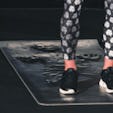If you’re looking for a super-simple plan for losing fat or gaining muscle weight, check out our New Year All You guides to each (Fat Loss, Muscle). They help you lose or pack on pounds accordingly with easy adjustments to what you’re already eating, which makes altering your physique almost effortless. However, if you’re familiar with basic, healthy eating already and you’ve hit a plateau, or you’re the type who likes to know exactly how many calories you’re taking in as well as what kind, you may be ready for a more granular and scientific approach: tracking macronutrients.
By figuring out how many grams of protein, carbs, and fat you need to consume to reach your goal, and hitting those numbers each day, you empower yourself to have complete control of your transformation. It will also allow you to troubleshoot any problems that come up along the way with much less guesswork. Not gaining muscle? You’ll be able to assess how many carbs you’re eating versus fats, and which macro it makes sense to bump up. Hit a standstill in your weight loss? You’ll know how and where to cut calories from your day.
Pull up your calculator app and get ready to write down some numbers¦
Step 1: Determine Your Resting Metabolic Rate
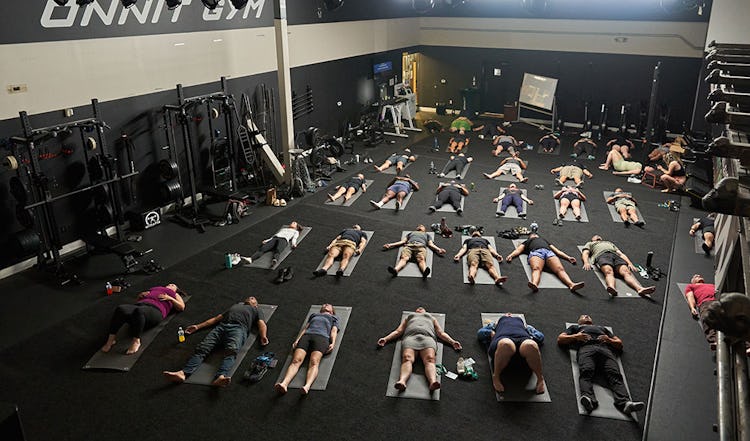
Your resting metabolic rate (RMR) is the number of calories your body burns at rest—just keeping you alive with no additional activity. There are many equations that nutritionists and dieticians use to determine this number and none are 100% accurate, but they all give you a solid starting point. I like the good ol’ Mifflin-St Jeor equation, which has been demonstrated to be more accurate than most. This formula takes into account your weight, sex, age, and even height.
First, you’ll have to convert your bodyweight from pounds to kilograms (divide your weight by 2.2) and your height from inches to centimeters (multiply by 2.54).
For men:
(10 x your weight in kg) + (6.25 x your height in cm) – (5 x age in years) + 5
For women:
(10 x your weight in kg) + (6.25 x your height in cm) – (5 x age in years) – 161
Let’s plug in some numbers using me as an example. I’m a male, 205 pounds (93kg), 6’2” tall (188 cm), and 45 years old.
Using the men’s equation, I find¦
(10 Ã 93) + (6.25 Ã 188) – (5 Ã 45) + 5
930 + 1173 – 225 + 5 = 1,880
My resting metabolic rate is about 1,880 calories. (Note that it’s OK to round this number off.)
Step 2: Factor In Your Activity
We obviously don’t lie in bed all day (although some days it’d be nice), so we need to factor in how many calories our activities burn.
If you work out or play sports 1–3 times a week, you perform what’s known as light activity, and you will multiply your RMR number by 1.375.
If you exercise or play 3–5 times a week, you’re moderately active. Multiply by 1.55.
If you train or are active 6–7 days a week, you’re in the “very active” camp. Multiply by 1.725.
Finally, if you’re crushing it nearly every day AND have a physically demanding job as well, multiply by 1.9.
I lift weights for a total of about two hours every week, and I play tennis up to five hours per week, but my job has me mostly in front of a computer all day, so my activity level is probably only in the moderate range. Therefore, I’ll multiply my 1880 RMR by 1.55. That gives me 2900 (again, rounded), which is the number of calories I need to eat to maintain my weight.
Step 3: Calculate Your Calorie Needs
If you want to MAINTAIN your current bodyweight, aim to eat whatever number of calories you calculated from your RMR x activity factor daily.
If you want to LOSE weight, start by subtracting 500 from that number. If you want to GAIN weight, add 500.
Step 4: Calculate Your Macros
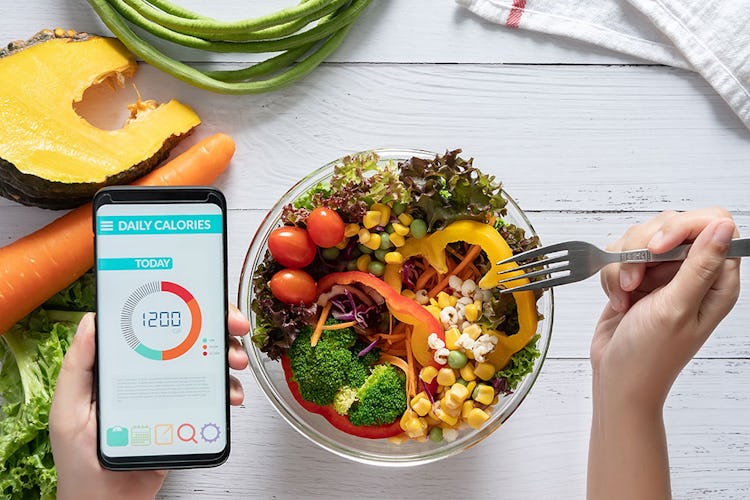
Once you have your daily calories figured out according to your goal, you can break them down into macronutrients. This not only makes your calories easier to count, it lets you know exactly how much of each type of food you need to consume. You see, you have to take in a certain number of calories to gain or lose weight, but the breakdown of protein, carbs, and fat determines your body composition—i.e., how much of the weight you lose or gain is fat versus muscle. Some muscle loss is inevitable when you’re dieting, and when you’re bulking up, you’re bound to gain some fat too, but the right combination of macros will put the odds in your favor, letting you keep more of the tissue you want while you shed or maintain the kind you don’t.
Protein
Protein supports muscle growth and maintenance as well as satiety (feeling less hungry between meals), so it’s the most import macro. Every meal you eat should feature it, and when and if you snack, you should choose foods that offer primarily protein as well. Aim to eat about 1 gram of protein per pound of your bodyweight each day. You can get by with a little less, and a little more won’t hurt either.
Note that if you’re very overweight, eating your bodyweight in grams of protein is probably impractical and not ideal. In this case, eat one gram per pound of the bodyweight you’re shooting for. In other words, a 300-pound person who remembers looking and feeling their best at 200 pounds will eat 200 grams of protein daily.
Another way to look at it is to have 25–35% of your calories come from protein. Each gram of protein contains 4 calories, so if I’m following a 2400-calorie diet to lose weight (2900–500=2400), I should eat 600–840 calories from protein-rich foods. That equals 150–210g protein. (Again, for simplicity’s sake, I’m happy with eating one gram per pound, which for me is 205g¦ but since 200 is a round number and easier to remember, I’ll just go with that. I also think it’s a good idea to aim toward the higher end of the protein spectrum when you’re dieting to ensure that you preserve as much muscle as possible.)
Most of your protein should come from the purest sources available, which are animal foods. Chicken, lean beef, fish and other seafood, eggs, yogurt, and cottage cheese are some of the best protein sources, but protein powder supplements are OK too for convenience. Most animal foods will contain some fat as well, so to keep things simple and prevent the fats from adding up too fast, choose the leanest cuts of meat most of the time. Sirloin steak, for instance, has a better protein-to-fat ratio than ground beef. That said, count the fat grams in your protein foods whenever possible.
Tip: If you like to snack on cheese, or use it to garnish your dishes, Parmigiano Reggiano is a smart choice. It has the highest amount of protein, gram for gram, of any cheese—and even more than chicken, beef, or fish. We’re talking 10 grams of protein in a one-ounce serving!
Of course, if you’re a vegetarian/vegan or plant-based eater, you’ll need to get your protein through non-animal sources. Combining foods such as beans and rice, nut butter and bread, etc., can provide the protein you need, but beware of how many carbs and fats you’re taking in as well. Supplementing with a plant-based protein powder may be necessary to make sure you hit your protein goals without overstepping your carb and fat allowances.
Fat
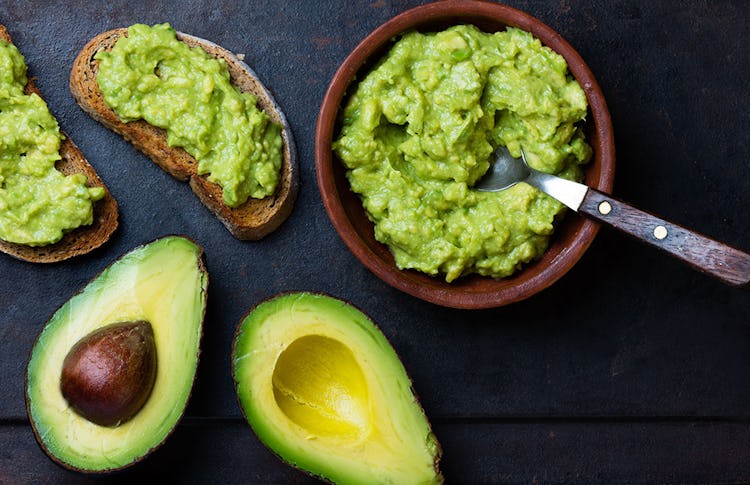
Unfairly maligned for weak associations with heart disease and other health ailments for years, dietary fat is now recognized as an important nutrient for hormone production and overall health, but it still packs a lot of calories—nine per gram, which is more than twice what a gram of carbs or protein provides. That means that while we need fat in the diet, we don’t want to go overboard because the calories will add up too fast. That’s a concern even if your goal is to gain weight. Calories that your body doesn’t convert to muscle will be stored as fat.
I recommend you aim for 0.5 grams of fat per pound of your bodyweight to start. As with protein, if you’re very heavy, you’ll be better off calculating this based on your goal bodyweight. Using myself as an example, I would eat about 100g of fat per day at a bodyweight of 205. At 900 calories, that’s a little under 40% of the total I’m allowed.
Most of your fat intake for the day should come by way of your protein foods, as there will always be at least a few grams in chicken, beef, salmon, etc. Nuts and seeds, olives and olive oil, fish oil supplements, and avocado can make up the difference. You may also prepare foods with cooking oils, but be careful about your serving sizes, as they can add a lot of fat without your hardly noticing.
Carbohydrates
Now that you have your protein and fat numbers figured out, you can simply subtract them from your total number of calories to find the carbs you need. My 100g fat allowance is 900 calories, and my 200g of protein equals 800 calories, so that leaves me with 700 calories for carbs. Since carbs contain four calories per gram, that gives me 175g carbs to eat. This is a little under 30% of my calorie total.
Here’s your list of carb-rich foods: grains (bread, cereal, pasta, rice), legumes (beans and peas), tubers (potatoes, sweet potatoes, other root vegetables like squash and carrots), fruit, and green vegetables. Be sure to count the carbs in your starchy foods and fruits toward your carb total, but the green vegetables are so low in calories that you can eat as many as you want (of course, count any dressings or sauces that you add to them!). Realize that there are also some carbs in dairy foods (milk, yogurt), so try to keep track of those as well.
How Do I Track Macros?
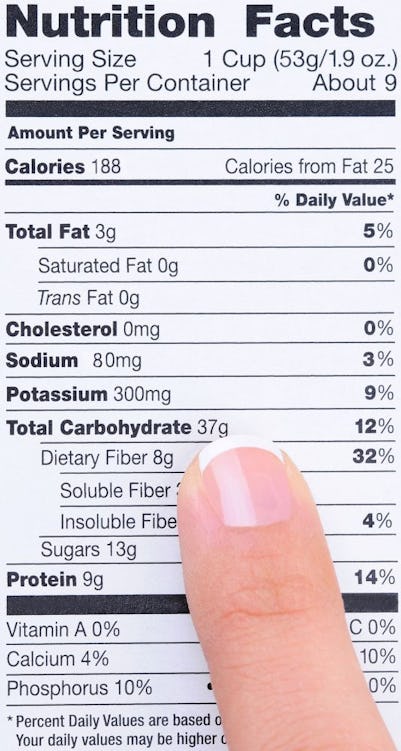
Now that you know how much of each type of food to eat, you’ll have to get comfortable with reading food labels so you can add your macros up properly. A food scale to measure your portions is a good idea too. This may seem like a nuisance at first, but once you get the hang of it, you’ll memorize how many proteins, carbs, and fats are in your favorite meals and you won’t have to obsess over them.
You can estimate your macros to some degree by using the hand-portioning trick I discuss in the fat loss guides. This will allow you to eyeball your portions with some accuracy when you eat out, or otherwise can’t control the exact ingredients and amounts you’re served. But to stay as close to your macro numbers as possible, I recommend you read labels and keep a tally throughout the day. Apps such as My Fitness Pal can be helpful for recording your numbers, as well as telling you how much of this or that nutrient is in your meal.
Try to include at least one food from each of the protein, fat, and carb food lists above in your meal plan each day. Focus on eating a variety of fruits and vegetables, and the vitamins and minerals you need to look and feel great will take care of themselves.
Adjusting Your Numbers

The calories and macros you calculate here just give you a starting point. They should send you in the right direction on your cutting or bulking program, but you’ll have to keep an eye on them. Make sure you record your numbers daily, and take note of any days you exceed your allowances or fall short. If you’re totally compliant for two weeks and haven’t lost a pound yet, cut 300 or so calories from your carb and/or fat numbers (never protein) and see if that makes a difference. If you’re trying to bulk up and haven’t gained a pound after two weeks, add 300 or so more calories, pumping up your carb and/or fat quotas as you see fit.
In either case, slow and steady is the best progress. If you’re losing several pounds per week (when cutting) or gaining more than one (while bulking) you’re dieting too hard or eating too much, respectively, and that means you risk losing muscle/gaining fat. You may lose a few pounds in your first few weeks of a diet as your body sheds excess water weight, but you don’t want to see the scale go down by five pounds or so on a regular basis.
However, don’t go by the scale alone. Take measurements and progress photos of your physique so you know the weight is coming off or going on in the right places. Monitor your progress in the gym and make sure you’re still getting stronger and have energy enough to fuel your workouts. You have to experiment, be patient, and pay attention to how your body looks and feels.
For recipes that make healthy meals, see the following:
Gluten-Free and Nut-Free Snacks That Taste Great
3 Killer High-Protein Lunch Ideas
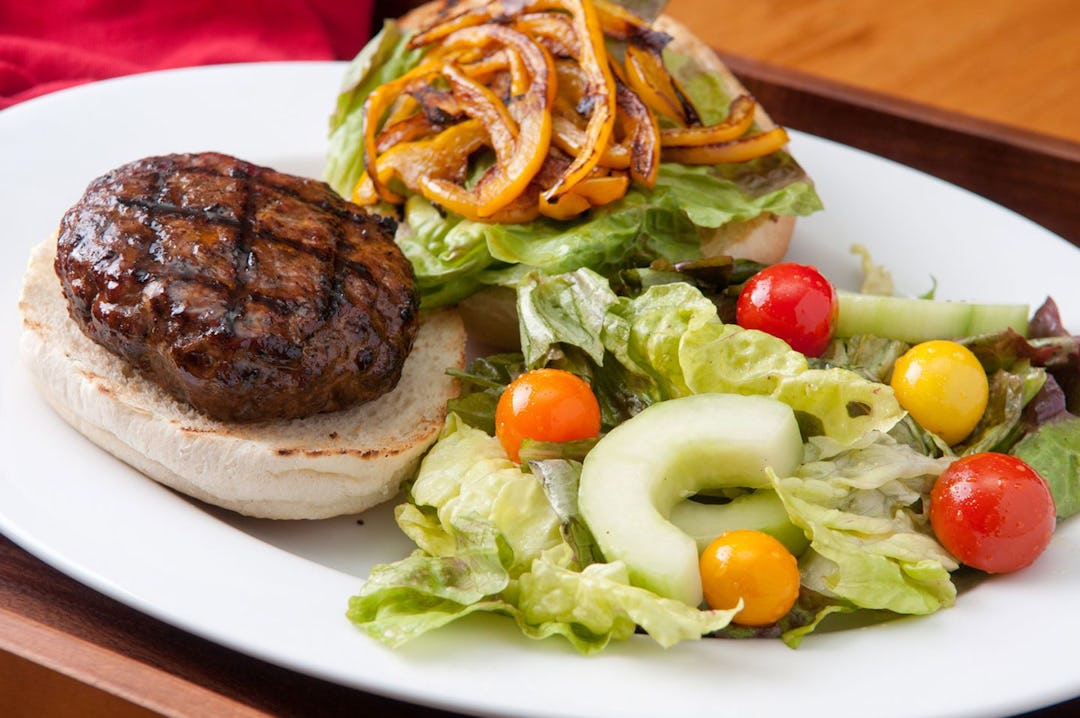
)
